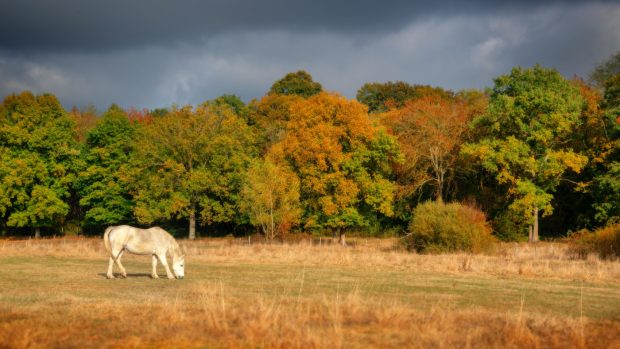A new study suggests that reducing turnout to restrict a pony’s grass intake may be pointless.
Researchers at Aberystwyth University’s Institute of Biological, Environmental and Rural Sciences, in collaboration with the Waltham Equine Studies Group, found ponies on restricted grazing increase their grass intake during the time they are in the field, particularly as they become accustomed to their routine.
Two groups of four pony mares were observed over a six-week period.
Group A had 24-hour access to pasture, while group B had three hours’ access and were stabled with ad lib hay and water for the remaining 21 hours.
The group B ponies had higher estimated herbage intakes than those in group A over those three hours.
And, by the final week, they had learned to consume 40% of their total daily dry matter intake as grass during their time at pasture.
Fructan and other rapidly fermentable carbohydrates found in grass have been linked to laminitis and it is common practice to restrict susceptible ponies’ access to pasture to reduce the risk.
But this study implies that horse owners may have to find alternative solutions.
“The ponies appeared progressively to increase their intake over the weeks, suggesting that they can learn and change their grazing behaviour — which may have implications on laminitis and obesity,” said vet Pat Harris, who helped supervise the research.
“One study won’t solve laminitis, but it could make people aware that ponies can eat a relatively large amount in a short period of time.”
Robert Eustace, director of the Laminitis Clinic, Wilts, was surprised by the findings.
“That has not been my experience,” he said. “Restricting grass intake is the only known way to prevent laminitis.”
But Spillers research and development manager Clare Barfoot said: “The implication is that reducing ponies’ time out on normally managed pastures, with the view to limiting the intake of rapidly fermentable carbohydrates, may not be as effective as first thought.”
This news story was first published in the current issue of Horse & Hound (24 March, 2011)




